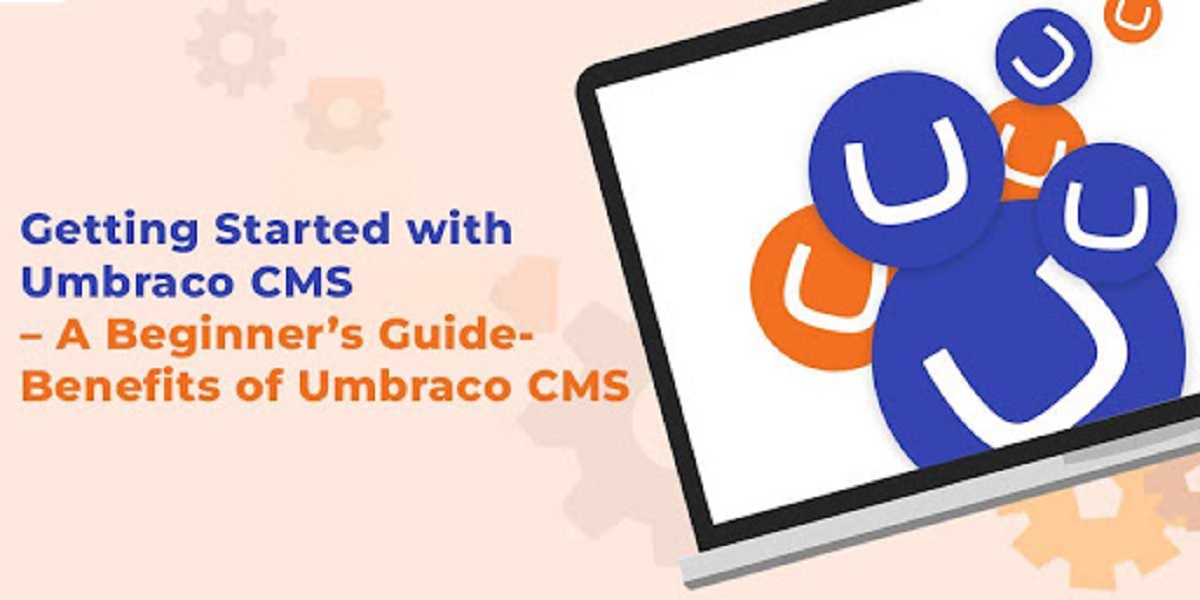How to Leverage Technology to Get Hired Faster

Moving a level below in the fast-changing job market, finding a job is thus not only about having the right qualifications or relevant work experience. Still, it is also about how to ride the wave of change. Technology is recreating the way companies operate and, as they speak, reshaping the very landscape of hiring. From AI-assisted resume screenings to virtual interviews and online networking platforms, technology has become an ally of the job seeker. So, knowing which technological tools and strategies can drive your job search into high gear and allow you to stay ahead of the competition is essential.
The following all-encompassing guide details using technology effectively for faster hiring, emphasizing potent platforms, tools, and strategies for a smarter, faster, and more successful job search.
1. Using AI-Powered Job Search Engines
Gone are the days when one would browse newspapers for odd jobs! AI has changed everything concerning how job seekers go about finding new opportunities to advertise on job search engines such as LinkedIn, Glassdoor, Indeed, and ZipRecruiter, where AI analyzes the attributes of users, matching them to appropriate job openings according to their skills, experiences, and preferences.
These platforms analyze everything you do, from your job searches to the applications you submit, as well as the updates you make to your profile, and suggest jobs based on your specific background, thereby saving you the time of looking through endless irrelevant listings and increasing your chances of matching with what you want.
Pro Tips:
- Create a thoroughly detailed, keyword-rich profile on each site.
- Opt-in allows the job boards to track your preferences, which helps in quality improvement.
- Create job alerts to be notified immediately whenever a relevant opportunity is posted.
2. Create an Online Presence
Internet vetting of candidates by recruiters and hiring managers is becoming more common before interviews. Therefore, digital footprints become as vital as a well-crafted resume.
Your LinkedIn profile, GitHub portfolio, personal website, and social media presence can further obstruct or bolster your chances of landing a job. The more professional and visible your online presence is, the more trust you earn in the eyes of potential employers.
What You Can Do:
- Keep your LinkedIn profile clean and up-to-date, including recommendations and endorsements.
- If you are a creative or technical professional, showcase your work on Behance, Dribbble, and GitHub.
- Starting a professional blog or portfolio website for listing your skills, projects, and accomplishments is always a good idea.
- Social media profiles should be clean and professional.
3. Technology to Optimize Your Resume
ATS is an Applicant Tracking System. It's in pre-hire recruitment used to filter resumes before they reach any human eye. They scan resumes for keywords, format, and qualifications. Hence, your resume has to be optimized to evade the ATS and get into the hands of the recruiter.
Several tools that leverage artificial intelligence today analyze your resume against the job advertisement and then provide feedback on areas for improvement. They monitor formats, keywords, and grammar and assess the efficacy of your resume with real-time strategies to help you get noticed.
A resume builder application could streamline the process more efficiently, providing templates friendly to the ATS while allowing for customization.
Tips for Optimization:
- Modify every resume according to the respective job description.
- Use simple formatting and fonts that are ATS-compliant.
- Input relevant keywords reflecting the job posting.
- Emphasize quantifiable achievements and use bullet points for clarity.
4. Automate Job Applications (But Don't Go Too Far)
The application process can be grueling, with dozens of jobs to be applied for by hand. There are some platforms and browser extensions to lend assistance in automating the application process. They come with the ability to autofill forms, upload your resume, and apply to multiple listings in no time.
This is all very well, but automation, as much as it can assist in speeding things up, should never negate that personal touch. A recruiter can always tell if a cover letter is generic or if a resume hasn't been tailored. Automation should be your accomplice in this grand search, not the weapon of choice.
Balanced Approach:
- Use automation tools to submit basic information quickly.
- Always personalize your resume and cover letter for high-priority roles.
- Track your applications to avoid duplicate submissions and leave a professional follow-up.
5. Upskill With Online Learning Platforms
Technology has revolutionized the job-seeking process and how we prepare for a job. With the availability of both free and paid online courses, it is easier than ever to learn new skills or upgrade already-held ones from home.
From coding to data analysis to marketing, finance, and public speaking, Coursera, Udemy, LinkedIn Learning, edX, and Skillshare teach it. Some courses even issue certifications you can display on your LinkedIn profile or resume.
Staying updated on industry-relevant skills can significantly boost your job prospects and attractiveness to potential employers.
Best Practices:
- Choose courses relevant to your career aspirations.
- Seek out certifications respected in your industry.
- Set aside specific learning time and put it to use with small projects.
6. Get Smart Interview Preparation for the Virtual Interview
Virtual interviews have been established as a norm in this hybrid-remote working world. Although these are handy, preparation and the right tools are essential.
Commonly used interview platforms include Zoom, Microsoft Teams, and Google Meet. Familiarize yourself with the platform and practice features like sharing your screen, background blurring, and chat functions.
AI interview practice apps help provide input about your body language, speech rate, and answer clarity in a real interview. Some of these tools also ask questions that mimic a particular company's or job role's style.
Planning Checklist:
- Camera, microphone, and internet connection tests are a must beforehand.
- Dress up professionally, at least for the half of the body showing on camera.
- An interview takes place in a clean, quiet, and well-lit area.
- Record mock interviews to assess yourself.
7. Network Digitally and Strategically
Networking continues to be one of the most effective means of getting hired, and today, the technology offers the fastest means to connect with professionals around the globe. Virtual networking events, webinars, online communities, and social networks present nearly limitless access to approaching the right people.
LinkedIn is the best online networking hub for professionals. Joining groups, commenting on posts, and sending thoughtful messages can open doors to job opportunities. Plus, there are online Slack groups, Discord servers, and forums on Reddit and niche industry platforms where one can do focused networking.
How to Network Effectively Online:
- Do not just connect; talk to them.
- Add value to your conversations; don't just ask for jobs.
- Attend relevant online events and follow up with the attendees.
- Contact alumni from your college or former colleagues and connect with them on LinkedIn.
8. Use Freelance Platforms To Create Immediate Opportunities
Freelancing is a good way to stay busy, make money, and build your portfolio while awaiting the perfect full-time job. Technology has ushered in freelance platforms like Upwork, Fiverr, Toptal, and Freelancer.com.
They provide remote working, review-collecting, and reputation-building opportunities, which make people more attractive to future employers. Freelancing jobs can turn into full-time jobs.
Freelancing Tips:
- Work your way up from smaller projects to develop credibility and get good reviews.
- Focus much of your freelance energy on a specialty that matches your long-term career goals.
- Be professional in all your communications, and deliver on time.
- Try to use the freelance work to fine-tune your skills and promote them.
9. Use Career Management Apps to Stay Organized
The job search itself is not organized within its scope- it incorporates managing resumes, cover letters, applications, interviews, and follow-ups. Without the system, it would not take much to make everything go haywire. Technology offers many tools, from productivity to organization, to keep that job search going.
Use apps like Trello, Notion, or Airtable to create a custom interface for tracking job leads, deadlines, application statuses, and follow-up dates. Other tools like Calendly and Google Calendar help schedule interviews and networking calls without confusion.
Stay Organized By:
- Creating a job application tracker with notes and deadlines.
- Setting reminders for follow-ups and interviews.
- Storing documents in the cloud for easy access from any device.
- Creating templates for cover letters and follow-up emails to save time.
10. Apply AI Technology for Career Coaching and Resume Interpretations
Personal careers have become ever more personalized with the aid of artificial intelligence, as tools now can analyze a resume, show what improvements can be made, present percentages of how matched your resume is to a particular job, and coach a job seeker on how to answer interview questions for that role.
The technology smartly substitutes career consultancy services previously reserved for a handful of high-profile clients with cost-effective and probably free programs in chatbots, online assistants, and career coaching portals.
A few of them let you practice fake job interviews with AI and give pointers on enhancing your performance. Another category of services gives tips for writing down the CV or cover letter in real time.
Benefits of AI Coaching:
- General input objective and thorough.
- Resume suggestions guided by real job descriptions.
- Simulated practice answering behavioral and technical questions.
- Precision of articulation in strengths and weaknesses.
11. Trend in the Job Market Through the Analytic Tool
Out of these kinds, beyond gut feeling or making wild guesses, data-driven insights delivered by technology tell the job seekers about market trends. Through tools such as Google Trends, LinkedIn's Workforce Report, and sector-specific labor market dashboards, job seekers can learn where demand is increasing, what skills are most desirable, and which areas the companies are recruiting more aggressively.
These analytics guide tactical decisions regarding industry focus, skills to aspire for learning, or even application spaces. This information empowers targeting the right types of jobs while minimizing the risk of throwing wide, unfocused nets.
Key Uses for Analytics Tools:
- Which Job Titles Are Trending in Your Location or Industry?
- Convictions by which Skills the Employers List Bumperly in Job Postings.
- Spot Hiring Booms in Industries Around Cybersecurity, AI, Health Tech, and Green Energy.
- Define Moving or Upskilling Based on Actual Demand.
12. Email Tools and AI Help Personalize Your Outreach
Typical of many job seekers is that after they apply to a role, that is it. Following up with a personalized email could be one of the greatest things you can do. Technology allows you to scale this outreach further, all while sounding human and personal.
Recruiter email addresses are found using tools like Hunter.io, FindThatLead, and Mailtrack, and follow-up messages are written and tracked to determine whether opened using them. AI writing tools like Grammarly, Jasper, or ChatGPT help forge thoughtful human-sounding emails.
Email Tips to Stand Out:
- Use the name of the hiring manager.
- Reference something particular about the company or role.
- Stay friendly but professional in tone.
- Use some action or next steps to end with; offer to discuss it further.
13. Go Niche to Get Better Results
There is too much supply on general job boards, and the competition is intense, leaving the more niche sites to provide specific opportunities with far less competition. Whether tech or healthcare, marketing or creative jobs, or the nonprofit sphere, specialized job boards exist for every expertise.
Examples: Angel List for startups, Dice for jobs in technology, Idealist for nonprofit jobs, Mediabistro for jobs in media, and We Work Remotely for remote jobs. The hiring managers posting on these sites are likely looking for an ideal set of skills and might have a very straightforward application process.
Why Niche Boards Work:
- Directly relevant and would fit perfectly into your skill set.
- Less competition as compared to the general boards.
- Employers respond more and with their specialization.
- Target roles for startup positions, freelance work, or remote work.
14. Optimize Your Content Strategy on LinkedIn
LinkedIn is a lot more than just a digital resume. It is a platform for content. Many professionals have leveraged the platform to inspire insightful content connected to their fields, with much success in landing job interviews. Sharing your knowledge and opinions on relevant topics while engaging others enhances your visibility and allows you to establish thought leadership.
The LinkedIn algorithm adores consistent and engaging posts, thus boosting recruiters' chances of finding you, even without your application.
Effective Content Tactics:
- Post about your professional journey, obstacles, and industry trends once or twice a week.
- Engage with the posts of recruiters and with content produced by your fellow professionals.
- Share thoughts you gained from books, podcasts, or your general professional experience.
- Share slides, an infographic, or a short video that establishes you as a leader in your field.
20. Customizing Job Search Strategies by Industry
As technology advances, it allows personalizing the job-searching approach concerning specific industries being targeted. These could imply software developers with their GitHub profiles and coding tests, while marketing teams use analytics dashboards and content portfolios.
There is no "one-size-fits-all" in our industry application. Match your toolkit, platforms, and communication style with the expectations of that industry. Read your blogs, join Slack channels, and follow the influencers from your area to stay topical and informed.
Tailored Strategy Tips:
- Tech: GitHub, Stack Overflow, and Leetcode.
- Design: Dribbble, Behance, Figma portfolio.
- Marketing: HubSpot certifications and campaign metrics.
- Writing: Articles on Medium or a personal blog.
Conclusion: Tech as Your Career Booster
Technology is no longer a cool addition to the job search; it’s already a must-have. For a graduate fresh from school, switching careers, or waiting for that next big promotion, only technology will shorten the path to employment.
From AI job boards to resume optimization, tech for virtual interview practice, and digital networking, you name it- all these will arm you to fight your way through a crowded market. Remaining updated, flexible, and always willing to embrace technology is key to advancing your career journey.
Remember, using technology is not good enough; try to be smart about it. Use a blend of automation and personalization, efficiency and authenticity, innovation and strategy; this is how you land that interview today.
Hyperlink InfoSystem - Most Trusted End-to-End development Solution Provider.
Write For Us





